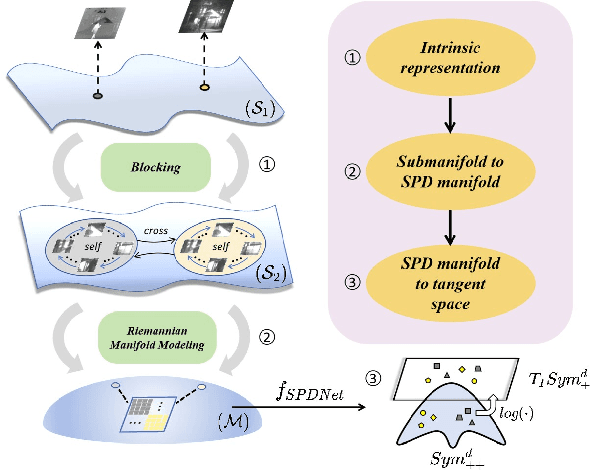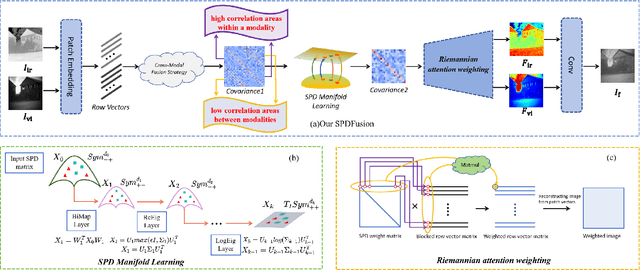Huan Kang
GrFormer: A Novel Transformer on Grassmann Manifold for Infrared and Visible Image Fusion
Jun 17, 2025Abstract:In the field of image fusion, promising progress has been made by modeling data from different modalities as linear subspaces. However, in practice, the source images are often located in a non-Euclidean space, where the Euclidean methods usually cannot encapsulate the intrinsic topological structure. Typically, the inner product performed in the Euclidean space calculates the algebraic similarity rather than the semantic similarity, which results in undesired attention output and a decrease in fusion performance. While the balance of low-level details and high-level semantics should be considered in infrared and visible image fusion task. To address this issue, in this paper, we propose a novel attention mechanism based on Grassmann manifold for infrared and visible image fusion (GrFormer). Specifically, our method constructs a low-rank subspace mapping through projection constraints on the Grassmann manifold, compressing attention features into subspaces of varying rank levels. This forces the features to decouple into high-frequency details (local low-rank) and low-frequency semantics (global low-rank), thereby achieving multi-scale semantic fusion. Additionally, to effectively integrate the significant information, we develop a cross-modal fusion strategy (CMS) based on a covariance mask to maximise the complementary properties between different modalities and to suppress the features with high correlation, which are deemed redundant. The experimental results demonstrate that our network outperforms SOTA methods both qualitatively and quantitatively on multiple image fusion benchmarks. The codes are available at https://github.com/Shaoyun2023.
SPDFusion: An Infrared and Visible Image Fusion Network Based on a Non-Euclidean Representation of Riemannian Manifolds
Nov 16, 2024



Abstract:Euclidean representation learning methods have achieved commendable results in image fusion tasks, which can be attributed to their clear advantages in handling with linear space. However, data collected from a realistic scene usually have a non-Euclidean structure, where Euclidean metric might be limited in representing the true data relationships, degrading fusion performance. To address this issue, a novel SPD (symmetric positive definite) manifold learning framework is proposed for multi-modal image fusion, named SPDFusion, which extends the image fusion approach from the Euclidean space to the SPD manifolds. Specifically, we encode images according to the Riemannian geometry to exploit their intrinsic statistical correlations, thereby aligning with human visual perception. Actually, the SPD matrix underpins our network learning, with a cross-modal fusion strategy employed to harness modality-specific dependencies and augment complementary information. Subsequently, an attention module is designed to process the learned weight matrix, facilitating the weighting of spatial global correlation semantics via SPD matrix multiplication. Based on this, we design an end-to-end fusion network based on cross-modal manifold learning. Extensive experiments on public datasets demonstrate that our framework exhibits superior performance compared to the current state-of-the-art methods.
 Add to Chrome
Add to Chrome Add to Firefox
Add to Firefox Add to Edge
Add to Edge